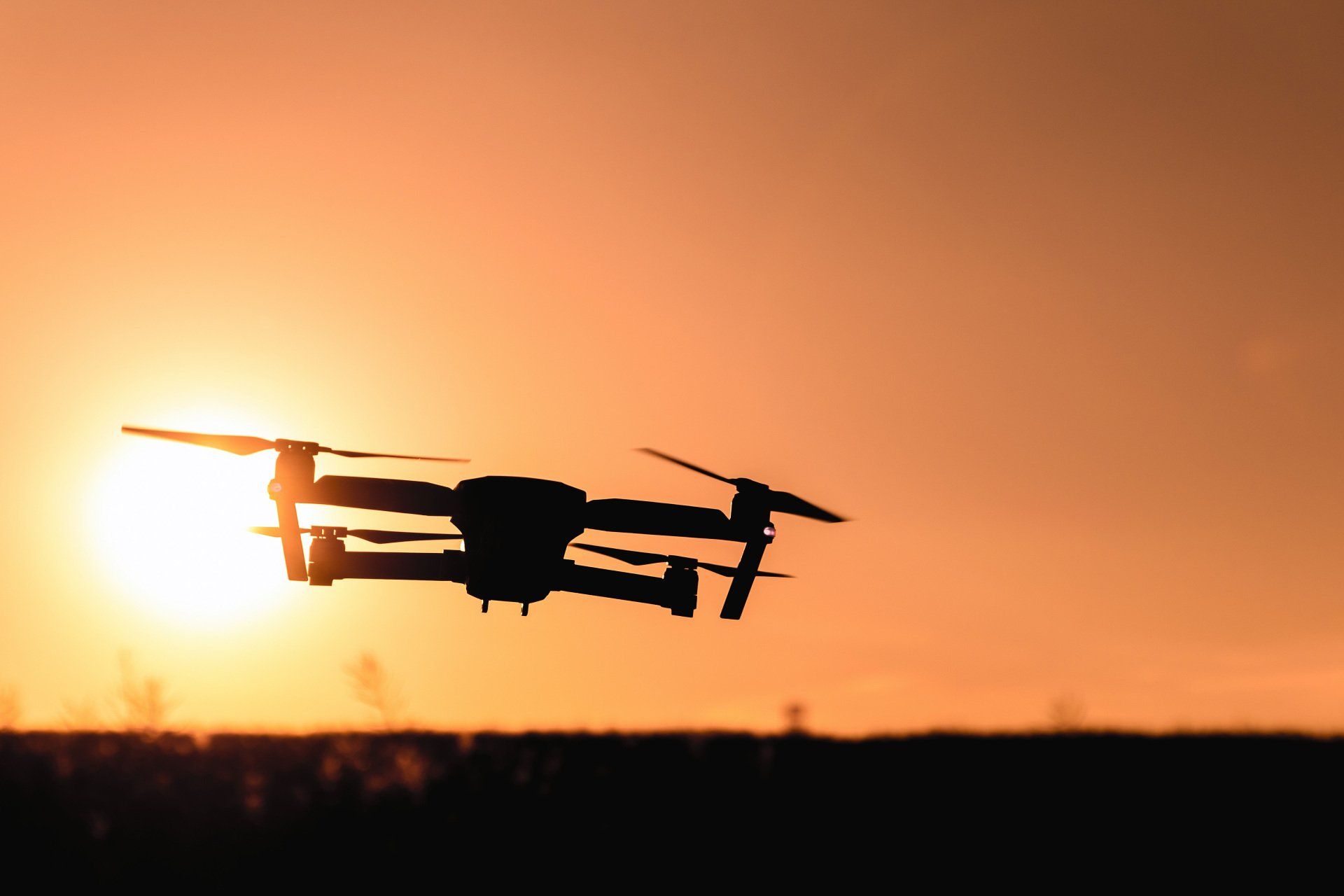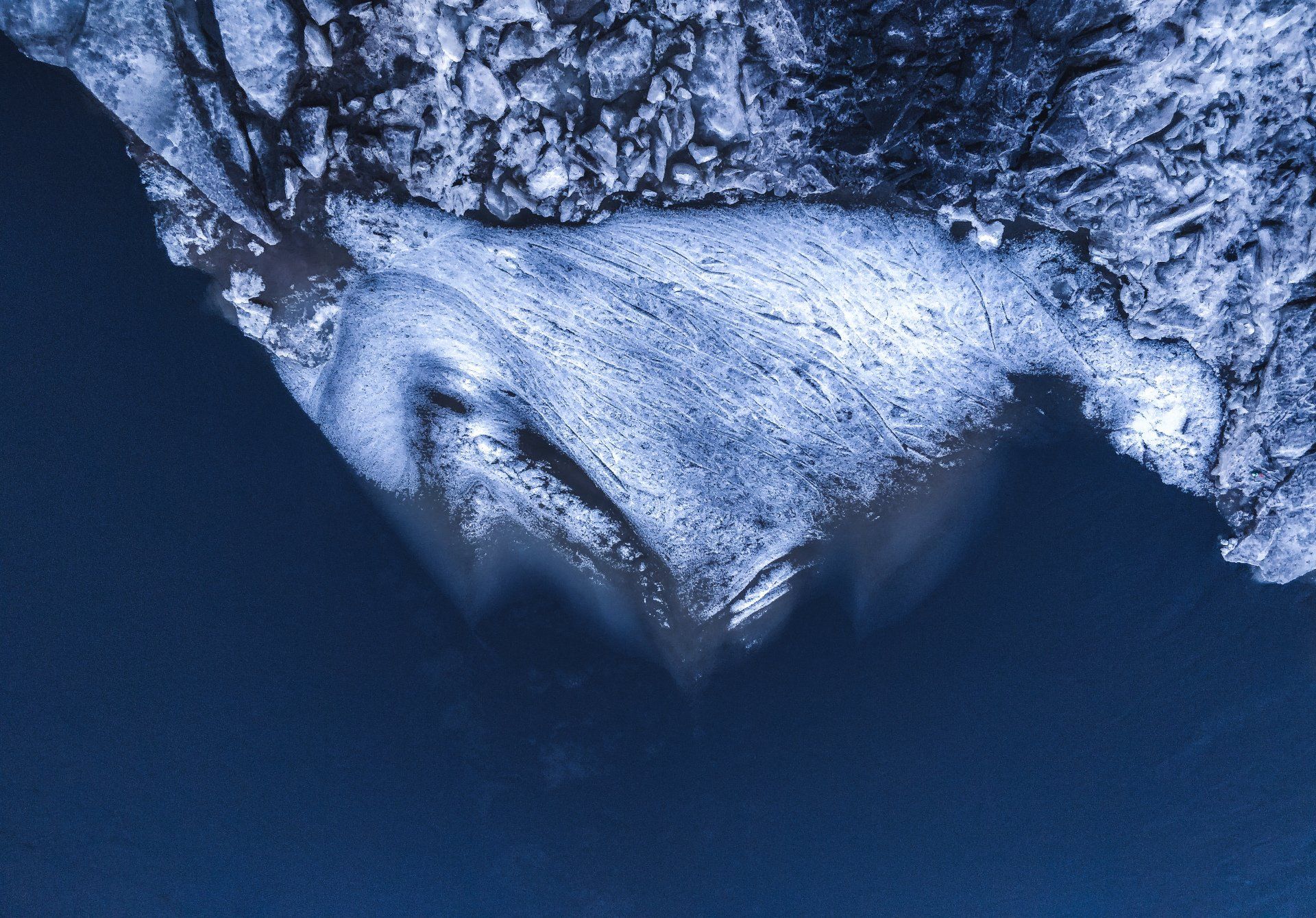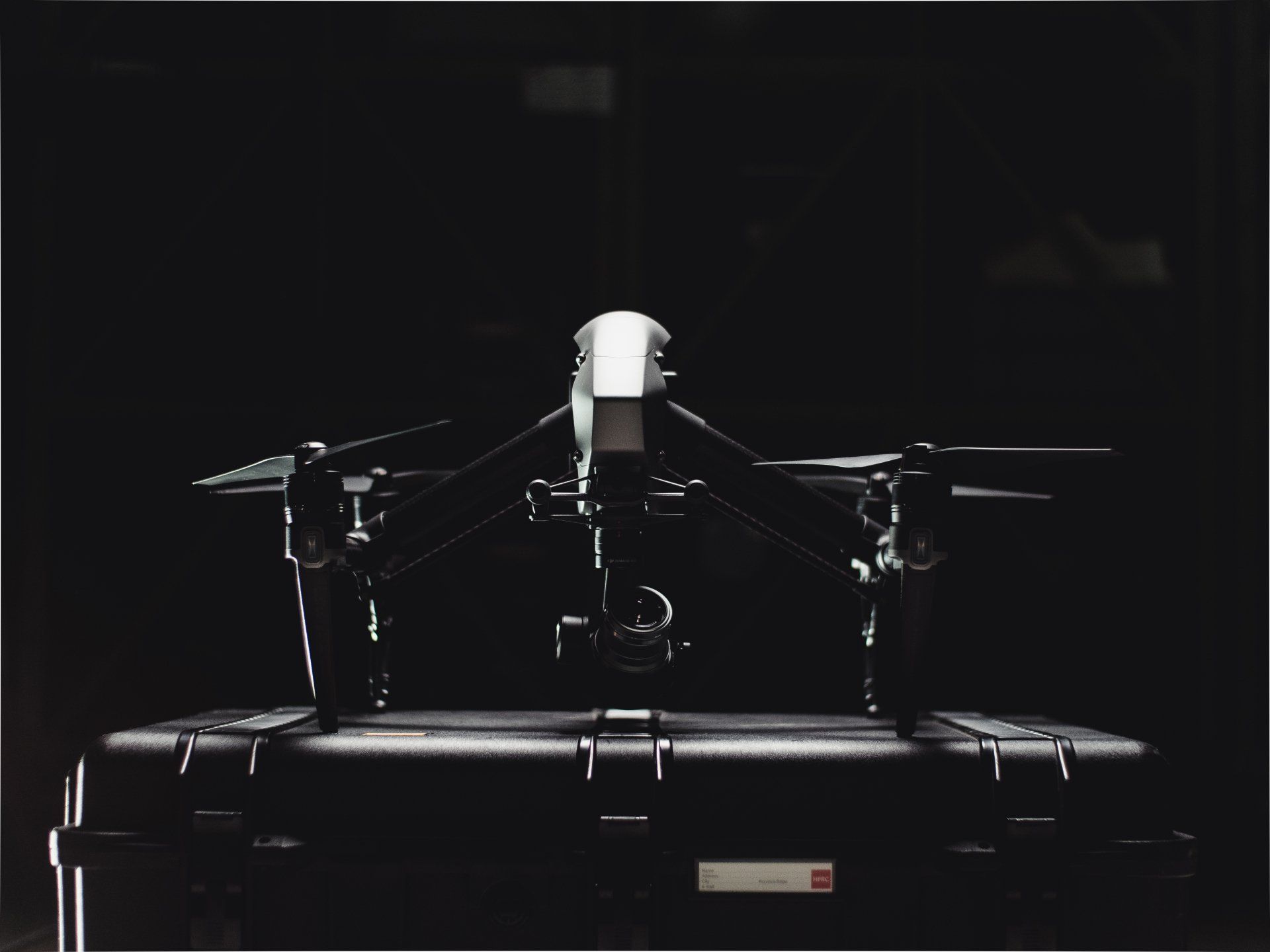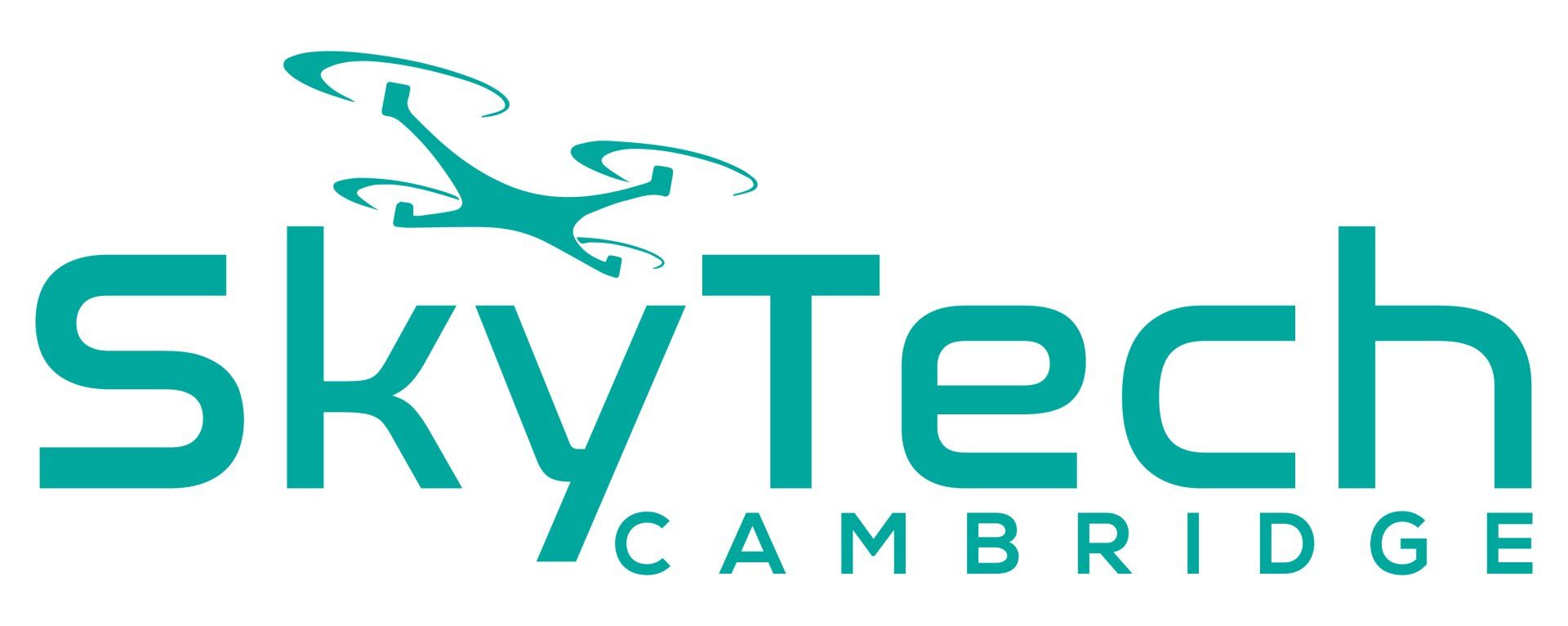The Drone Knowledgebase

Laws, regulations and best practices for flying drones in the UK
In the United Kingdom, the Civil Aviation Authority (CAA) is responsible for regulating the use of drones. The CAA has published a set of guidelines called the Dronecode, which outlines the rules and regulations for flying drones in the UK. These guidelines are intended to ensure the safe and responsible operation of drones in UK airspace. It is the responsibility of drone operators to familiarize themselves with these guidelines and to follow them at all times while flying their drones.
What is the altitude limit for drones in the UK?
In the United Kingdom, drones are subject to a number of regulations that govern their operation, including restrictions on altitude. These regulations are designed to ensure the safety of people and property on the ground, as well as protect airspace and minimize the risk of collisions with other aircraft.
According to the UK's Civil Aviation Authority (CAA), the maximum altitude at which a drone can be flown is 400 feet (122 meters) above ground level. This altitude limit applies to both commercial and recreational drone operators, and is designed to ensure that drones remain well below the altitude of other manned aircraft, which typically fly at much higher altitudes.
There are a few exceptions to this altitude limit. For example, drones may be flown higher than 400 feet if they are being used for specific purposes such as scientific research, mapping, or surveying. In these cases, the CAA may grant a special permission for the drone to be flown at a higher altitude.
It is important to note that the altitude limit for drones in the UK is a maximum, and drone operators are encouraged to fly at a lower altitude whenever possible. This is especially true in urban areas or other areas with a high concentration of people and property, where the risk of injury or damage is greater.
In addition to the altitude limit, drones in the UK are also subject to a number of other regulations. For example, drone operators must maintain a line of sight with their drone at all times, and must not fly drones over or near people, vehicles, or buildings unless they have permission to do so.
These regulations are designed to ensure the safety of people and property on the ground, as well as protect airspace and minimize the risk of collisions with other aircraft. Drone operators in the UK must comply with these regulations in order to ensure the safe and responsible operation of their drones.
What is the maximum horizontal distance drones can be flown in the UK?
According to the UK's Civil Aviation Authority (CAA), there is no specific lateral distance limit for drones. However, drone operators must maintain a line of sight with their drone at all times, and must not fly drones over or near people, vehicles, or buildings unless they have permission to do so. This means that, in practice, the lateral distance that a drone can fly is limited by the operator's ability to see and control the drone.
It is important to note that the lateral distance limit for drones in the UK is not a hard and fast rule. Rather, it is a guideline that is designed to ensure the safety of people and property on the ground, as well as protect airspace. Drone operators are encouraged to use their judgment and common sense when flying drones, and to take into account factors such as the visibility, weather conditions, and the presence of other people or objects in the area.
How old must you be to fly a drone in the UK?
In the UK, you must be at least 12 years old to operate a drone on your own. If you are under 12 years of age, you must be supervised by a person who is 16 years of age or older, and both you and the supervisor must have passed the flyer ID test.
These rules apply to both recreational and commercial drone operators, and are designed to ensure the safety of people and property on the ground, as well as protect airspace. It is important for all drone operators to be familiar with and comply with these rules in order to ensure the safe and responsible operation of their drones.

What weather conditions should you generally NOT fly a drone?
There are a number of weather conditions in which it is generally not safe to fly drones. These include:
- Strong winds: Drones are vulnerable to strong winds, which can cause them to drift off course or lose altitude. It is generally not safe to fly drones in winds that exceed around 25 mph (40 km/h).
- Rain or snow: Drones are generally not designed to withstand rain or snow, and flying them in these conditions can damage the electronics and sensors. It is generally not safe to fly drones in either rain or snow.
- Fog: Fog can reduce visibility and make it difficult for drone operators to see and control their drones. It is generally not safe to fly drones in foggy conditions.
- Thunderstorms: Thunderstorms can produce lightning, which can pose a serious risk to drones and their operators. It is generally not safe to fly drones during thunderstorms.
- Extreme heat: Drones are vulnerable to overheating, and flying them in extreme heat can damage the electronics and reduce their performance. It is generally not safe to fly drones in extreme heat.
In summary, there are a number of weather conditions in which it is generally not safe to fly drones, including strong winds, heavy rain or snow, fog, thunderstorms, and extreme heat. Drone operators should exercise caution and use their judgment when deciding whether or not to fly in these conditions.
How about flying drones in cold weather?
Cold weather can pose challenges for drones and their operators, but it is generally not unsafe to fly drones in cold weather as long as certain precautions are taken. Here are a few tips for flying drones in cold weather:
- Keep batteries warm: Cold temperatures can reduce the performance and lifespan of drone batteries. To maximize battery performance in cold weather, keep the batteries warm by storing them inside a warm, insulated bag or container.
- Preheat the drone: To prevent the motors and electronics from freezing, it is a good idea to preheat the drone before flying. This can be done by placing the drone in a warm, insulated bag or container for a few minutes before takeoff.
- Check for icing on the props: Cold temperatures can cause the moving parts of a drone to become icy. This can affect the props at any time and may cause the drone to stall or crash. It is advised that operators frequently make checks to ensure there is no build up of ice on any of the props.
- Dress appropriately: It is important to dress warmly when flying drones in cold weather. Wear layers of clothing to trap heat and protect against the cold, and make sure to cover exposed skin to prevent frostbite.
- Reduced flight time: Batteries won't last as long in cold weather. Ensure that you have allowed for this in your flight plan to ensure that you have enough battery capacity to safely return the drone to your location.

Restricted flight areas in the UK for drones
In the UK, airport restricted zones (sometimes referred to as FRZ's - Flight Restriction Zones) are areas around airports where drone flight is restricted or prohibited. These zones are established to ensure the safety of aircraft operations and to protect people and property on the ground. The size and shape of these zones can vary, but they generally extend for a radius of five miles around an airport. Within this radius, drone flight is generally restricted to 400 feet or below.
In addition to airport restricted zones, there are also other areas in the UK where drone flight is restricted or prohibited. These include military bases, power plants, prisons, and other sensitive locations. It is important to check local laws and regulations before flying a drone in these areas to ensure that you are not violating any laws or regulations.
Operators should also be aware of the rules and regulations established by the Civil Aviation Authority (CAA) for drone operation in the UK. Violating these rules can result in significant fines and penalties.
We recommend the following website to check airspace restrictions in the UK: Drone Safety Map UK
Do I need to label my drone to fly in the UK?
Yes. If you operate a drone or unmanned aircraft in the UK, you must display your operator identification (ID) on the drone itself. The operator ID is a unique identification code that is assigned to you by the Civil Aviation Authority (CAA) when you register as a drone operator.
In the UK, all drone operators are required to register with the CAA and obtain an operator ID, regardless of the size or type of drone they operate. This applies to both commercial and non-commercial operators, as well as individuals and organizations.
To obtain an operator ID, you will need to complete the CAA's online registration process and provide some basic information about yourself and the drones you will be operating. Once you have registered, you will receive your operator ID, which must be displayed on your drone in a clearly visible location.
To label drones and model aircraft, make sure that the operator ID is clearly visible from the outside or within an easily accessible compartment without using a tool.
The operator ID should be written in block capital letters that are at least 3mm tall and placed on the main body of the aircraft in a secure location that is safe from damage.
Do not use your flyer ID, which is assigned to the person flying the aircraft, but rather use your operator ID to properly identify yourself as the responsible operator.
For more information on registering a drone see here

Do I need insurance to operate a drone in the UK?
In the UK, drone operators are required to have insurance coverage in place to protect themselves and others against potential risks and liabilities associated with drone operations. The specific insurance requirements for drones in the UK depend on the type and nature of the operation, as well as the size and weight of the drone.
For example, if you are operating a drone for commercial purposes, you are required to have a minimum of £5 million in third-party liability insurance coverage. This coverage is designed to protect you and your business against claims made by third parties for injuries, damages, or losses that may result from your drone operations.
If you are operating a drone for non-commercial purposes, you are not required to have third-party liability insurance coverage. However, it is generally a good idea to have some form of insurance coverage in place to protect yourself and others in the event of an accident or other incident.
It is important to note that the insurance requirements for drones in the UK are subject to change, and it is the responsibility of the drone operator to ensure that they have the appropriate coverage in place at all times. If you are planning to operate a drone in the UK, it is essential that you familiarize yourself with the current insurance requirements and take steps to ensure that you are adequately covered.
What are the privacy rules when flying drones in the UK?
In the UK, drone operators are required to follow a set of rules and regulations surrounding privacy when operating drones. These rules are intended to protect the privacy of individuals and ensure that drones are not used to invade the privacy of others.
Under UK law, it is generally unlawful for a person to use a drone to record images or sounds of another person without their consent, if the purpose of the recording is to observe or record their activities. This includes the use of drones to record images or sounds through windows or other openings in buildings.
In addition to these general rules, there are also specific privacy rules that apply to certain types of drone operations. For example, the Data Protection Act 2018 (DPA) sets out specific rules that apply to the use of drones for the purpose of collecting, storing, or processing personal data, including images and sounds.
As a drone operator in the UK, it is your responsibility to ensure that you are complying with all applicable privacy laws and regulations when operating your drone. This includes obtaining the necessary consents before recording images or sounds of other people, and taking appropriate steps to protect the privacy of individuals in accordance with the DPA and other relevant laws.
For more information visit the CAA website.

What is GSD (Ground Sampling Distance) relating to drone surveys?
Ground sample distance (GSD) is an important factor to consider when using drones for surveying and mapping purposes. It refers to the size of the pixels in an image taken by a drone's camera, and it determines the resolution and detail of the resulting map or survey. In this article, we will explore what GSD is, how it is calculated, and how it impacts drone surveys.
First, let's define what GSD is. Simply put, GSD is the distance between two adjacent pixels on the ground, as seen in an image taken by a drone's camera. It is typically measured in centimeters or inches, and it is determined by the combination of the drone's altitude, camera focal length, and image sensor size.
To calculate GSD, we need to know the altitude of the drone, the camera's focal length, and the size of the image sensor. The altitude is the distance between the drone and the ground, while the focal length is the distance between the camera's lens and the image sensor. The size of the image sensor is the physical size of the chip inside the camera that captures the image.
To calculate GSD, we can use the following formula:
GSD = (focal length x altitude) / (image sensor size x 1000)
For example, if the drone is flying at an altitude of 100 meters, the camera has a focal length of 20 millimeters, and the image sensor size is 1/2.3 inches, the GSD would be:
GSD = (20 x 100) / (0.489 x 1000) = 4.09 cm
Now that we know what GSD is and how to calculate it, let's talk about how it impacts drone surveys.
One of the main advantages of using drones for surveying and mapping is the ability to quickly and easily capture high-resolution images and data from a variety of angles and altitudes. However, the resolution and detail of the resulting map or survey will depend on the GSD of the images.
A lower GSD means that the pixels in the image are smaller, which results in a higher resolution and more detailed map or survey. For example, if the GSD is 1 cm, the pixels in the image will be small, and the resulting map or survey will have a high level of detail and accuracy. On the other hand, if the GSD is 10 cm, the pixels will be larger, and the resulting map or survey will have a lower resolution and less detail.
It's important to note that the GSD of an image is not the only factor that determines the resolution and detail of a map or survey. Other factors, such as the quality of the camera, the lighting conditions, and the processing software used to create the map or survey, can also impact the final product.
When selecting a drone for surveying and mapping purposes, it's important to consider the GSD that the drone's camera is capable of producing. Higher-end drones often have cameras with larger image sensors and longer focal lengths, which can result in a lower GSD and a higher resolution map or survey.
In addition to the resolution and detail of the map or survey, the GSD can also impact the accuracy of the data. For example, if the GSD is too high, it may be difficult to accurately measure small features or objects on the ground, such as utility poles or trees. In these cases, a lower GSD may be necessary to ensure accurate measurement and mapping.
Another factor to consider when it comes to GSD is the size of the area being surveyed or mapped. For large areas, a higher GSD may be acceptable, as it will result in fewer images and data points to process and analyze. However, for smaller areas or those with a higher level of detail, a lower GSD may be necessary to accurately capture and map the features of interest.
It's also important to consider the intended use of the map or survey when determining the appropriate GSD. For example, if the map or survey will be used for large-scale planning or analysis, a higher GSD may be acceptable. However, if the map or survey will be used for more detailed or precise measurements, such as construction or asset management, a lower GSD may be necessary.
In conclusion, ground sample distance is an important factor to consider when using drones for surveying and mapping purposes. It determines the resolution and detail of the resulting map or survey, as well as its accuracy. By understanding how to calculate GSD and how it impacts drone surveys, you can choose the appropriate drone and camera settings to produce the best possible results for your specific needs.

What are the advantages of using drones for land surveying?
Drones have revolutionized the way land surveys are conducted, providing a cost-effective, efficient, and safe alternative to traditional surveying methods. In this article, we will explore the various applications of drones in land surveying, the benefits and limitations of using drones, and some best practices for successful drone-based land surveys.
What is land surveying?
Land surveying is the process of accurately determining the spatial relationships of natural and man-made features on the Earth's surface. Land surveyors use a variety of methods, including GPS, total stations, and aerial photography, to collect data and create maps, plans, and reports that are used in a wide range of applications, including construction, land development, environmental assessment, and resource management.
How are drones used in land surveying?
Drones, or unmanned aerial vehicles (UAVs), equipped with specialized sensors and cameras, are increasingly being used in land surveying to collect high-resolution aerial imagery and other data. Drones can quickly and safely cover large areas, providing a bird's-eye view of the terrain that is useful for mapping, 3D modeling, and other applications.
There are several types of drones used in land surveying, ranging from small, consumer-grade drones to larger, professional-grade drones. Smaller drones are typically more affordable and easier to operate, but they may not have the same payload capacity or flight time as larger drones. Professional-grade drones, on the other hand, are typically more expensive and require specialized training and certification to operate, but they offer greater precision, stability, and durability.
Some common applications of drones in land surveying include:
- Mapping: Drones equipped with high-resolution cameras and GPS can be used to create accurate maps of large areas, including topographic maps that show the elevation and contours of the terrain. Drones can cover large areas quickly and accurately, and the resulting maps can be used for a variety of purposes, including construction, land development, and resource management.
- 3D modeling: Drones equipped with LIDAR sensors can be used to create highly accurate 3D models of the terrain. LIDAR (light detection and ranging) sensors use lasers to measure the distance to the ground, creating a detailed point cloud that can be used to create a 3D model of the terrain. 3D models can be used for a variety of purposes, including visualization, analysis, and design.
- Volume calculations: Drones equipped with LIDAR sensors or photogrammetry cameras can be used to accurately measure the volume of earthwork, such as stockpiles of sand, gravel, or other materials. This can be useful for construction projects, resource management, and environmental assessment.
- Inspections: Drones can be used to inspect a variety of structures and features, including buildings, bridges, pipelines, and other infrastructure. Drones can safely access hard-to-reach or hazardous locations, providing a detailed view of the structure and identifying any potential issues or damage.
Benefits of using drones in land surveying
There are several benefits to using drones in land surveying, including:
- Cost-effectiveness: Drones can significantly reduce the cost of land surveying, especially for large or difficult-to-access sites. Traditional surveying methods often require the use of expensive equipment, such as total stations or helicopters, and can be time-consuming and labor-intensive. Drones can cover large areas quickly and efficiently, reducing the need for multiple surveyors and other personnel.
- Safety: Drones can access hazardous or difficult-to-reach locations safely, reducing the risk of injury to surveyors. This is especially important in cases where surveyors may need to work at heights or in other potentially dangerous conditions. Drones can also be used to survey hazardous sites, such as contaminated land or disaster-affected areas, reducing the risk of exposure to surveyors.
- Accuracy: Drones equipped with specialized sensors and cameras can provide highly accurate data and imagery. For example, LIDAR sensors can produce detailed point clouds with sub-centimeter accuracy, and photogrammetry cameras can capture high-resolution images that can be used to create highly accurate maps and 3D models.
- Speed: Drones can cover large areas quickly, reducing the time required for land surveys. This is especially useful for time-sensitive projects or for surveying large or complex sites.
- Flexibility: Drones can be used in a variety of conditions, including in urban and rural areas, and can be easily deployed to remote or difficult-to-access locations. Drones can also be used to survey sites that are difficult or impossible to access by other means, such as steep slopes or dense forests.

Can I fly a drone when visiting the EU?
Yes. First and foremost, it is important to understand that the laws and regulations governing drone use vary from country to country within Europe. In order to fly your drone legally, you will need to familiarize yourself with the specific laws and regulations of the country in which you plan to fly your drone. In general, however, there are a few key steps that you will need to follow in order to obtain permission to fly a drone in Europe.
*IMPORTANT UPDATE*
As a result of Brexit, UK drone pilots must obtain the A2 Certificate of Competence (CofC) or the General Visual Line of Sight Certificate (GVC) in the European Union (EU) member state where they wish to fly. However, once a pilot has obtained an A2 CofC or GVC in an EU member state, it is valid throughout the EU.
It is worth noting that drone pilots can still operate drones in the A1 (drones weighing less than 250g) or A3 subcategories of the Open Category in EU member states without a drone license, as long as they meet the necessary requirements, including registering their drone according to the registration requirements of the country in which they are flying.
Step 1: Understand the Different Classes of Drones
In Europe (like the UK), drones are divided into different classes based on their weight, capabilities, and intended use. It is important to understand which class your drone falls into, as this will determine the permissions that you need to obtain in order to fly it legally. The three main classes of drones in Europe are:
- Open Category: Drones in the open category are generally small, lightweight drones that are used for recreational purposes. These drones are typically allowed to fly in most areas, as long as they are flown at a safe distance from people and property.
- Specific Category: Drones in the specific category are larger and more complex than those in the open category. These drones are typically used for professional or commercial purposes, such as aerial photography or surveying. In order to fly a drone in the specific category, you will generally need to obtain a specific permission from the relevant aviation authority.
- Certified Category: Drones in the certified category are the largest and most complex drones, and are typically used for more specialized purposes, such as long-range communication or remote sensing. In order to fly a drone in the certified category, you will generally need to obtain a special certification from the relevant aviation authority.
Step 2: Register Your Drone
In many European countries, it is mandatory to register your drone with the relevant aviation authority. This is typically a simple process that can be done online, and it helps to ensure that all drones are accounted for and that their operators are aware of the rules and regulations governing drone use. In general, you will need to provide your personal details, as well as the make, model, and serial number of your drone.
Step 3: Obtain the Necessary Permissions
As mentioned earlier, the specific permissions that you need to obtain in order to fly your drone legally will depend on the class of drone that you are flying and the country in which you are flying it. In general, however, you will need to obtain permission from the relevant aviation authority in order to fly your drone in most European countries.
If you are flying a drone in the open category, you may not need to obtain any additional permissions beyond registering your drone. However, it is still important to follow all of the rules and regulations governing drone use, including maintaining a safe distance from people and property, and not flying your drone in restricted or prohibited areas.
If you are flying a drone in the specific or certified category, you will generally need to obtain a specific permission or certification from the relevant aviation authority in order to do so legally. This may involve filling out a form or completing an online application, and you may need to provide additional documentation, such as proof of insurance or a safety plan.
Why is it important to understand the Return To Home (RTH) feature when flying a drone?
The "return to home" feature on a drone is an important safety feature that allows the drone to automatically fly back to its starting point in the event of a loss of connection with the remote control or if the battery becomes too low. This feature is especially important because it can help to prevent the drone from getting lost or crashing if the operator loses control of the device.
In addition to helping to prevent accidents, the return to home feature can also provide a sense of security for the operator. If the drone experiences a problem or the operator is unsure of how to control it, activating the return to home feature allows the operator to safely bring the drone back to its starting point without having to manually fly it back.
On many drones, the RTH feature can be configured to ascend the drone autonomously to a specific altitude when activated (programmed by the user before flight) before returning to the original takeoff position in a straight line. Some manufacturers now offer a dynamic return to home feature which allows the drone to return to the takeoff position while avoiding obstacles and plotting its trajectory intelligently using its obstacle avoidance sensors.

Why is RTK positioning important in a drone surveying and inspection workflow?
RTK (Real-Time Kinematic) positioning is a satellite navigation technique used to enhance the accuracy of position data obtained from GNSS (Global Navigation Satellite Systems) such as GPS (Global Positioning System). In RTK positioning, a receiver uses data from a nearby reference station to correct errors in its position calculation, resulting in a much more precise location estimate. This technique is often used in surveying, mapping, and other applications where high accuracy is required.
One of the key benefits of RTK positioning is that it allows for real-time correction of errors in the position data. This is achieved through the use of a reference station, which transmits correction data to the receiver. The reference station is typically located at a known, fixed location and is equipped with a high-precision GPS receiver. The receiver in the field (i.e., the one being used to determine the position) uses this correction data to adjust its position calculation in real-time, resulting in a much more accurate estimate of its location.
RTK positioning is often used in drones, or unmanned aerial vehicles (UAVs), for a variety of applications. For example, RTK-enabled drones can be used for precision agriculture, where they are used to map fields and apply fertilizers and pesticides with high accuracy. RTK drones can also be used for mapping and surveying applications, where they are used to create high-precision maps of land and infrastructure.
One of the main benefits of using RTK positioning in drones is the improved accuracy it provides. Traditional GPS systems are capable of providing position estimates with an accuracy of around 3-5 meters, but RTK positioning can achieve accuracies of just a few centimeters or even millimeters. This level of accuracy is essential for many applications, such as mapping and surveying, where even small errors in position can have significant consequences.
Another benefit of RTK positioning in drones is the ability to maintain accurate positioning even in challenging environments. Traditional GPS systems can be prone to errors caused by factors such as atmospheric interference, reflection off buildings and other structures, and interference from other electronic devices. RTK positioning can mitigate these errors and provide more accurate positioning even in challenging environments.
There are several different ways that RTK positioning can be implemented in drones. One common approach is to use a separate RTK receiver that is mounted on the drone, in addition to the GPS receiver that is used for navigation. This allows the drone to receive both GPS signals and correction data from the reference station, allowing it to calculate its position with high accuracy.
Another approach is to use an integrated RTK system, where the RTK receiver and GPS receiver are combined into a single unit. This can be more convenient for users, as it eliminates the need to carry and install separate RTK and GPS receivers. It can also reduce the weight and complexity of the drone, making it easier to operate and maintain.
There are also hybrid RTK systems, which combine the benefits of both separate and integrated RTK systems. In a hybrid system, the RTK receiver is mounted on the drone, but it is connected to a separate GPS receiver that is located on the ground. This allows the drone to receive correction data from the reference station while still using a high-precision GPS receiver for navigation.
In addition to the various RTK positioning systems that are available, there are also different types of reference stations that can be used. These include base stations, which are stationary reference stations that are located at a fixed location, and rover stations, which are portable reference stations that can be carried by the drone or other mobile device.
One of the main challenges of using RTK positioning in drones is the cost and complexity of the system. RTK receivers and reference stations can be expensive, and the setup and maintenance of the system can be time-consuming. However, the benefits of RTK positioning, such as increased accuracy and the ability to operate in challenging environments, often outweigh these costs for users who require high-precision location data.
In summary, RTK positioning is a valuable technology that is widely used in drones and other applications where high accuracy is required. It allows for real-time correction of errors in position data, resulting in much more accurate location estimates. While there are some challenges associated with using RTK positioning, the benefits often outweigh the costs for users who require high-precision location data.
